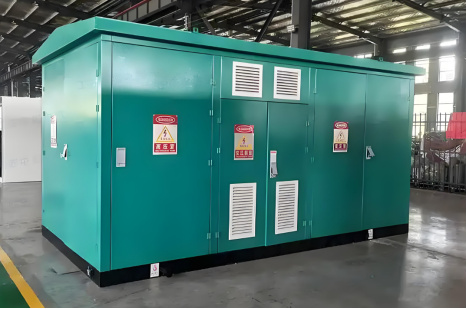
Business Background
The customer is a power equipment manufacturing enterprise in Shenzhen, and has signed a substation equipment supply contract with a large local infrastructure construction company in Dubai, and needs to ship a set of substation cabinets to Dubai. Due to the large size and heavy weight of the container, ordinary containers can not meet the transportation needs, so it was decided to use flat containers for shipping, and the customer highly recognized our rich experience and professional strength in the field of cross-border freight, and decided to entrust the shipping of power equipment to our company to be responsible for the whole process.
Business processes
1. Booking: After determining the transportation needs, the customer will contact our company immediately to provide detailed information about the goods, in addition to the size, weight, packaging form, but also inform the details of the distribution of precision parts inside the goods, as well as the estimated shipment date [specific date], the port of destination Dubai Jebel Ali Port and other key information.
2. Pick-up and packing: After the shipping company confirms the shipping space, arrange the fleet to pick up the flat container at the designated yard and transport it to the shipper's factory. The factory formulates a packing plan according to the characteristics of the goods, and uses professional hoisting equipment to load the substation cabinet onto the flat cabinet, and reinforces it to ensure the stability of the goods during transportation.
3. Customs declaration and inspection: The consignor prepares relevant documents, such as commercial invoices, packing lists, contracts, customs declaration power of attorney, etc., and entrusts the customs broker to declare the export to Shenzhen Customs. Since the substation equipment is not classified as dangerous goods, there is no need to apply for a dangerous package certificate, but it may be necessary to provide relevant qualification documents for the product. The customs will review the documents and goods, and release them after inspection.
4. Loading and transportation: After the goods are released, the fleet will transport the loaded flat cabinets to the designated yard of Shenzhen Port, and wait for the shipping company to arrange the loading. The ship set sail and began to be shipped to the port of Dubai.
5. Customs clearance at the port of destination: Before the goods arrive in Dubai, the consignee or its agent shall make an electronic declaration through the "Dubai Trade" platform (www.dubaitrade.ae) and submit commercial invoices, packing lists, certificates of origin, ocean bills of lading and other documents. Dubai Customs reviews the declaration information and documents and may inspect the goods.
6. Pick-up and distribution: After the customs clearance is completed, the consignee arranges a fleet to pick up the goods at the port and transport the substation container to the designated project location.
Core documents
1. Commercial invoice: describe in detail the name, specification, quantity, unit price, total price and other information of the goods.
2. Packing list: Explain the packaging of the goods, the size and weight of each package, and other details.
3. Ocean bill of lading: as proof of ownership of the goods and proof of the contract of carriage.
4. Certificate of Origin: Certifies the country of origin of the goods, so that the consignee can enjoy the corresponding preferential tariff policies.
5. Contract: A trade contract signed between the buyer and the seller.
6. Power of attorney for customs declaration: the authorization of the consignor to entrust the customs broker to handle the customs declaration procedures.
Precautions
1. Cargo reinforcement: Flat cabinets have no roof and side walls, and the goods are exposed, so the reinforcement work is very important to ensure that the goods will not be displaced or dumped during transportation.
2. Accurate documents: Dubai Customs has strict requirements for documents, and all document information must be accurate and consistent to avoid delays in customs clearance caused by document problems.
3. Understand local policies: In terms of tariff rates, in addition to the 5% tax rate applicable to general goods, some power equipment parts may be subject to different tax rates due to technical content and other factors, which need to be accurately inquired.
4. Transportation insurance: Considering the high value of the goods and the risks in the transportation process, it is recommended to purchase freight insurance to ensure the safety of the goods in transit.
5. Time arrangement: Arrange the time of each link reasonably, reserve enough time for customs declaration, customs clearance and other formalities, and avoid delayed delivery of goods due to time constraints.